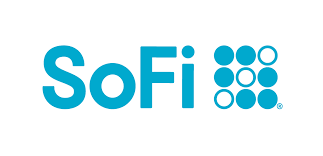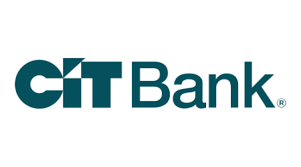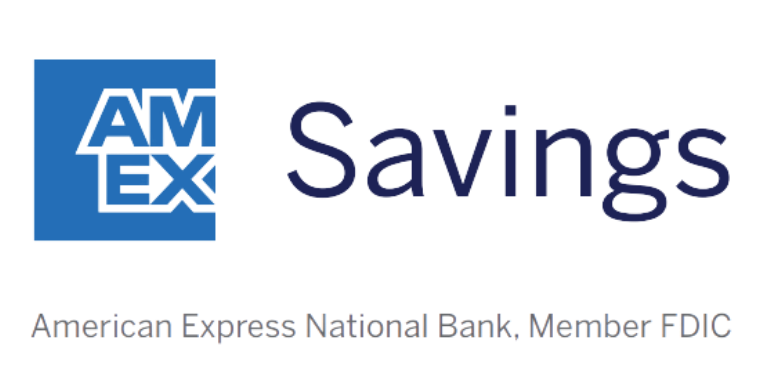There are many different types of loans that people take. Whether you get a mortgage loan to buy a home, a home equity loan or line of credit to do renovations or get access to cash, an auto loan to buy a vehicle, or a personal loan for any number of purposes, most loans have two things in common: They provide for a fixed period of time to pay back the loan, and they charge you a fixed rate of interest over your repayment period.
By understanding how to calculate a loan amortization schedule, you'll be in a better position to consider valuable moves like making extra payments to pay down your loan faster. Improving your understanding of concepts like this can help make managing your personal finances easier.
What is a loan amortization schedule?
A loan amortization schedule gives you the most basic information about your loan and how you'll repay it. When you take out a loan with a fixed rate and set repayment term, you'll typically receive a loan amortization schedule.
This schedule typically includes a full list of all the payments that you'll be required to make over the lifetime of the loan. Each payment on the schedule gets broken down according to the portion of the payment that goes toward interest and principal.
You'll typically also be given the remaining loan balance owed after making each monthly payment, so you'll be able to see the way that your total debt will go down over the course of repaying the loan.
You'll also typically get a summary of your loan repayment, either at the bottom of the amortization schedule or in a separate section. The summary will total up all the interest payments that you've paid over the course of the loan, while also verifying that the total of the principal payments adds up to the total outstanding amount of the loan.
Compare savings rates
Make sure you're getting the best account for you by comparing savings rates and promotions. Here are some of our favorite high-yield savings accounts to consider.
| Account | APY | Promotion | Next Steps |
|---|---|---|---|

Open Account for SoFi Checking and Savings
On SoFi's Secure Website.
Rating image, 4.50 out of 5 stars.
4.50/5
Our ratings are based on a 5 star scale.
5 stars equals Best.
4 stars equals Excellent.
3 stars equals Good.
2 stars equals Fair.
1 star equals Poor.
We want your money to work harder for you. Which is why our ratings are biased toward offers that deliver versatility while cutting out-of-pocket costs.
|
up to 3.80%²
Rate info
You can earn the maximum APY by having Direct Deposit (no minimum amount required) or by making $5,000 or more in Qualifying Deposits every 30 days. See SoFi Checking and Savings rate sheet at: https://www.sofi.com/legal/banking-rate-sheet.
Min. to earn: $0
|
New customers can earn up to a $300 bonus with qualifying direct deposits!¹
|
Open Account for SoFi Checking and Savings
On SoFi's Secure Website. |

Open Account for CIT Platinum Savings
On CIT's Secure Website.
Rating image, 4.50 out of 5 stars.
4.50/5
Our ratings are based on a 5 star scale.
5 stars equals Best.
4 stars equals Excellent.
3 stars equals Good.
2 stars equals Fair.
1 star equals Poor.
We want your money to work harder for you. Which is why our ratings are biased toward offers that deliver versatility while cutting out-of-pocket costs.
|
4.10% APY for balances of $5,000 or more
Rate info
4.10% APY for balances of $5,000 or more; otherwise, 0.25% APY
Min. to earn: $100 to open account, $5,000+ for max APY
|
Earn a bonus of at least $225 after a one-time deposit of $25,000+.
Transfer a one-time deposit of $25,000-$49,999.99 for a bonus of $225. Transfer a one-time deposit of $50,000+ for a bonus of $300. Account must be opened with code PS2025 while this promotion lasts, and funded within 30 days. Bonus will be fulfilled within 60 days from the funding date. There is no period of time where the customer will be required to maintain the funds. Account must be open when bonus is credited. One bonus per account and primary customer. Bonus will be credited into the Platinum Savings Account that fulfills the funding requirement. Funding can be deposited all at once or incrementally.
|
Open Account for CIT Platinum Savings
On CIT's Secure Website. |

Open Account for American Express® High Yield Savings
On American Express's Secure Website.
Rating image, 4.00 out of 5 stars.
4.00/5
Our ratings are based on a 5 star scale.
5 stars equals Best.
4 stars equals Excellent.
3 stars equals Good.
2 stars equals Fair.
1 star equals Poor.
We want your money to work harder for you. Which is why our ratings are biased toward offers that deliver versatility while cutting out-of-pocket costs.
|
3.70%
Rate info
3.70% annual percentage yield as of April 12, 2025. Terms apply.
Min. to earn: $0
|
N/A
|
Open Account for American Express® High Yield Savings
On American Express's Secure Website. |
SoFi disclosure:
¹ New and existing Checking and Savings members who have not previously enrolled in Direct Deposit with SoFi are eligible to earn a cash bonus of either $50 (with at least $1,000 total Direct Deposits received during the Direct Deposit Bonus Period) OR $300 (with at least $5,000 total Direct Deposits received during the Direct Deposit Bonus Period). Cash bonus will be based on the total amount of Direct Deposit. Direct Deposit Promotion begins on 12/7/2023 and will be available through 1/31/26. See full bonus and annual percentage yield (APY) terms at sofi.com/banking#1.
² SoFi members who enroll in SoFi Plus with Direct Deposit or by paying the SoFi Plus Subscription Fee every 30 days or with $5,000 or more in Qualifying Deposits during the 30-Day Evaluation Period can earn 3.80% annual percentage yield (APY) on savings balances (including Vaults) and 0.50% APY on checking balances. There is no minimum Direct Deposit amount required to qualify for the stated interest rate. Members without either SoFi Plus or Qualifying Deposits, during the 30-Day Evaluation Period will earn 1.00% APY on savings balances (including Vaults) and 0.50% APY on checking balances. Only SoFi Plus members are eligible for other SoFi Plus benefits. Interest rates are variable and subject to change at any time. These rates are current as of 1/24/25. There is no minimum balance requirement. Additional information can be found at http://www.sofi.com/legal/banking-rate-sheet. See the SoFi Plus Terms and Conditions at https://www.sofi.com/terms-of-use/#plus.
³ We do not charge any account, service or maintenance fees for SoFi Checking and Savings. We do charge a transaction fee to process each outgoing wire transfer. SoFi does not charge a fee for incoming wire transfers, however the sending bank may charge a fee. Our fee policy is subject to change at any time. See the SoFi Checking & Savings Fee Sheet for details at sofi.com/legal/banking-fees/.
⁴ SoFi Bank is a member FDIC and does not provide more than $250,000 of FDIC insurance per depositor per legal category of account ownership, as described in the FDIC’s regulations.
Any additional FDIC insurance is provided by the SoFi Insured Deposit Program. Deposits may be insured up to $3M through participation in the program. See full terms at SoFi.com/banking/fdic/sidpterms. See list of participating banks at SoFi.com/banking/fdic/participatingbanks.
⁵ We’ve partnered with Allpoint to provide you with ATM access at any of the 55,000+ ATMs within the Allpoint network. You will not be charged a fee when using an in-network ATM, however, third-party fees incurred when using out-of-network ATMs are not subject to reimbursement. SoFi’s ATM policies are subject to change at our discretion at any time.
⁶ Early access to direct deposit funds is based on the timing in which we receive notice of impending payment from the Federal Reserve, which is typically up to two days before the scheduled payment date, but may vary.
⁷ Overdraft Coverage is limited to $50 on debit card purchases only and is an account benefit available to customers with direct deposits of $1,000 or more during the current 30-day Evaluation Period as determined by SoFi Bank, N.A. The 30-Day Evaluation Period refers to the “Start Date” and “End Date” set forth on the APY Details page of your account, which comprises a period of 30 calendar days (the“30-Day Evaluation Period”). You can access the APY Details page at any time by logging into your SoFi account on the SoFi mobile app or SoFi website and selecting either (i) Banking > Savings > Current APY or (ii) Banking > Checking > Current APY. Members with a prior history of non-repayment of negative balances are ineligible for Overdraft Coverage.
How to calculate a loan amortization schedule if you know your monthly payment
It's relatively easy to produce a loan amortization schedule if you know what the monthly payment on the loan is. Starting in month one, take the total amount of the loan and multiply it by the interest rate on the loan. Then for a loan with monthly repayments, divide the result by 12 to get your monthly interest. Subtract the interest from the total monthly payment, and the remaining amount is what goes toward principal. For month two, do the same thing, except start with the remaining principal balance from month one rather than the original amount of the loan. By the end of the set loan term, your principal should be at zero.
Take a simple example: Say you have a 30-year mortgage for $240,000 at a 5% interest rate that carries a monthly payment of $1,288. In month one, you'd take $240,000 and multiply it by 5% to get $12,000. Divide that by 12, and you'd have $1,000 in interest for your first monthly payment. The remaining $288 goes toward paying down principal.
For month two, your outstanding principal balance is $240,000 minus $288, or $239,712. Multiply that by 5% and divide by 12, and you get a slightly smaller amount -- $998.80 -- going toward interest. Gradually over the ensuing months, less money will go toward interest, and your principal balance will get whittled down faster and faster. By month 360, you owe just $5 in interest, and the remaining $1,283 pays off the balance in full.
Calculating an amortization schedule if you don't know your payment
Sometimes, when you're looking at taking out a loan, all you know is how much you want to borrow and what the rate will be. Knowing the payment can help your mental budgeting when considering if you can afford the debt or not. In that case, the first step will be to figure out what the monthly payment will be. Then you can follow the steps above to calculate the amortization schedule.
There are a couple ways to go about it. The simplest is to use a calculator that gives you the ability to input your loan amount, interest rate, and repayment term. For instance, our mortgage calculator will give you a monthly payment on a home loan. You can also use it to figure out payments for other types of loans simply by changing the terms and removing any estimates for home expenses.
If you're a do-it-yourselfer, you can also use an Excel spreadsheet to come up with the payment. The PMT function gives you the payment based on the interest rate, number of payments, and principal balance for the loan. For instance, to calculate the monthly payment in the example above, you could set an Excel cell to =PMT(5%/12,360,240000). It would give you the $1,288 figure you saw in that example. The 5% is the interest rate, 12 indicates it's a monthly payment, 360 is how many payments for the entire loan term, and 240000 is the principal balance.
Why an amortization schedule can be helpful
There are many ways that you can use the information in a loan amortization schedule. Knowing the total amount of interest you'll pay over the lifetime of a loan is a good incentive to get you to make principal payments early. When you make extra payments that reduce outstanding principal, they also reduce the amount of future payments that have to go toward interest. That's why just a small additional amount paid can have such a huge difference.
To demonstrate, in the example above, say that instead of paying $1,288 in month one, you put an extra $300 toward reducing principal. You might figure that the impact would be to save you $300 on your final payment, or maybe a little bit extra. But thanks to reduced interest, just $300 extra is enough to keep you from making your entire last payment. In other words, $300 now saves you more than $1,300 later.
Armed with this knowledge, you can improve your home finances by strategically paying down your mortgage in ways that have the biggest impact, and while improving your credit score in the process.
Be smart about your loans
Even when your lender gives you a loan amortization schedule, it can be easy just to ignore it in the pile of other documents you have to deal with. But the information on an amortization schedule is crucial to understanding the ins and outs of your loan. By knowing how a schedule gets calculated, you can figure out exactly how valuable it can be to get your debt paid down as quickly as possible.
Looking for a personal loan but don’t know where to start? Our favorites offer quick approval and rock-bottom interest rates. Check out our list to find the best loan for you.
We're firm believers in the Golden Rule, which is why editorial opinions are ours alone and have not been previously reviewed, approved, or endorsed by included advertisers. Motley Fool Money does not cover all offers on the market. Motley Fool Money is 100% owned and operated by The Motley Fool. Our knowledgeable team of personal finance editors and analysts are employed by The Motley Fool and held to the same set of publishing standards and editorial integrity while maintaining professional separation from the analysts and editors on other Motley Fool brands. Terms may apply to offers listed on this page.